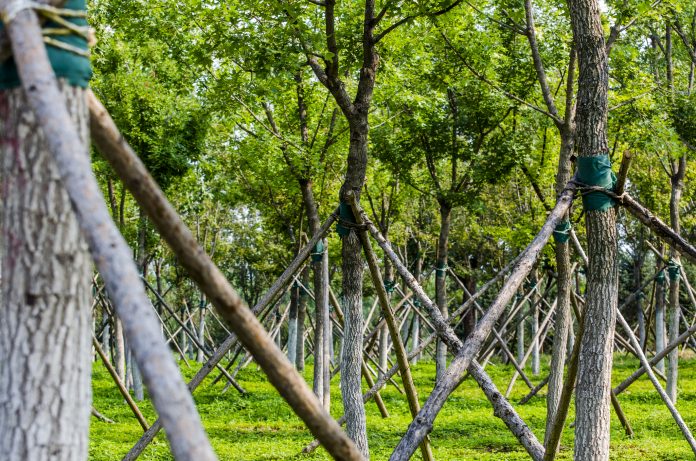As the UK is unlikely to meet its tree target through natural means alone, scientists look at measures of afforestation through natural expansion
Woodland expansion has been found to be one of the most effective solutions in mitigating climate change, and the level of growth needed to produce the number of trees required by UK targets is unlikely to be achieved through natural means alone.
Afforestation is the planting of trees, or the sewing of seeds in an area where there were no trees before, creating a new forest. This study analyses methods of afforestation in temperate rainforests and how the UK can utilise these methods to mitigate climate change.
Scientists, looking at temperate rainforests, analysed the browsing behaviour by livestock, which is a major determinant of the expansion and connection of fragmented UK upland oak woodlands.
Focusing on Dartmoor in South West England, scientists from the University of Plymouth found the presence of livestock led to far fewer oak saplings surviving – and when they did survive, they were smaller and in poorer condition, and few lived past eight years old without protection.
Looking at woodland expansion, the researchers found that strategically targeted interventions and selective planting into certain vegetation types can be used to test the need for tree guards and other protection such as fences.
Other research has additionally shown that the planting of native woodlands in upland areas could play a significant role in preventing the flash flooding, which has recently increasingly becoming more common across the UK.
Selective planting and woodland expansion
The disturbance by grazing livestock is not all bad, but its precise impact may depend on surrounding plant species. In some cases, if carefully managed, trampling by browsing livestock such as cattle and ponies can open areas of bracken and so help support the conditions for temperate rainforests to expand.
An example of disturbances can be seen with toxic bracken, though it may help protect the youngest tree seedlings from grazing animals, too much bracken may reduce suitable conditions for oak sapling establishment due to increased competition for light.
The study assessed the natural regeneration of oak saplings away from oak woodlands at multiple sites, showing that native oak establishment was largely confined to within 20m of the nearest adult tree.
This level of natural expansion is insufficient to adequately aid carbon storage, flood mitigation and biodiversity provision at the pace or scale required in these upland landscapes, but it could be used to improve the environmental sensitivity of planting schemes in protected landscapes such as Dartmoor and other National Parks, while reducing their visual impact.
Examining the health and benefits of native trees
Dr Thomas Murphy, currently an Industrial Research Fellow on the University’s Low Carbon Devon project, led the research as part of his PhD, said: “The planting of trees and an end to deforestation are increasingly being highlighted as low cost and environmentally sensitive mechanisms to combat climate change.
“These measures have been factored into the net-zero agendas of UK and other governments, with world leaders also pledging to address the issue during COP26 in Glasgow last year.
“Our findings however suggest the expansion of oak woodland into UK upland pasture systems is not a simple process. They may have a critical role to play, but these important temperate rainforests have been historically degraded and are now highly fragmented.
“Reversing that trend is likely to require strategic planting and informed livestock management. Getting this right, however, will warrant a delicate balancing act and close cooperation with a range of stakeholders, including particularly landowners and graziers, at a time when upland farms are facing severe financial pressures and there are ongoing changes in incentives.”
Environmentally sensitive mechanisms to combat climate change
The researchers additionally provided recommendations of agricultural processes, such as: livestock grazing (particularly cattle) should be encouraged close to adult native oak trees at the edge of woodlands as they reduce dense and competitive vegetation.
As well as this, they suggest that on sites where oak seedlings and saplings (1-3 years) have colonised, livestock should be excluded for a minimum period of 12 years to increase sapling survival, growth and establishment.
Finally, on upland valley slopes – where current ecosystem services provision is low and woodland establishment is required for connecting woodland habitat and rapid soil hydrological recovery – strategic planting and grazing management schemes should be used more.











